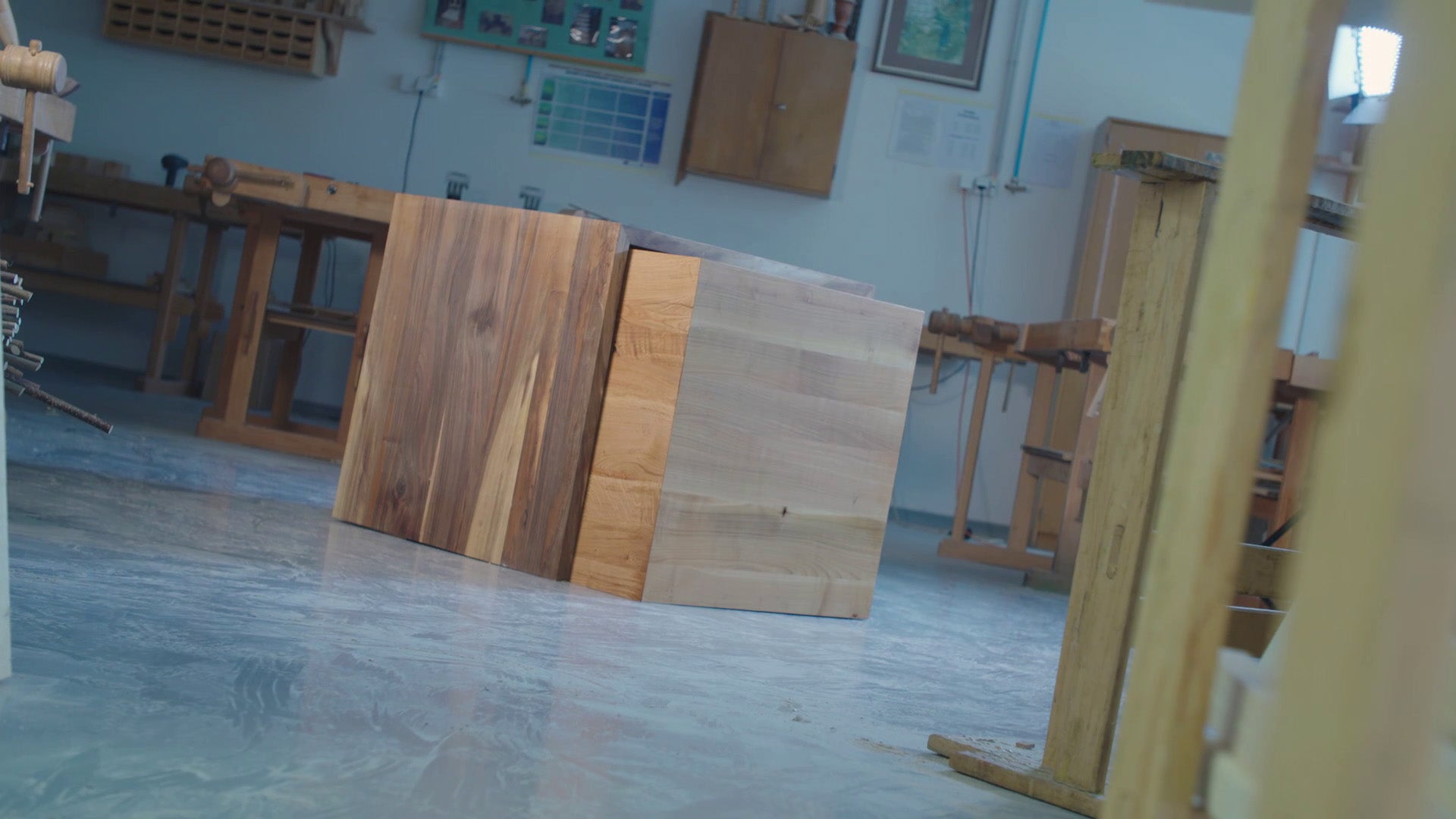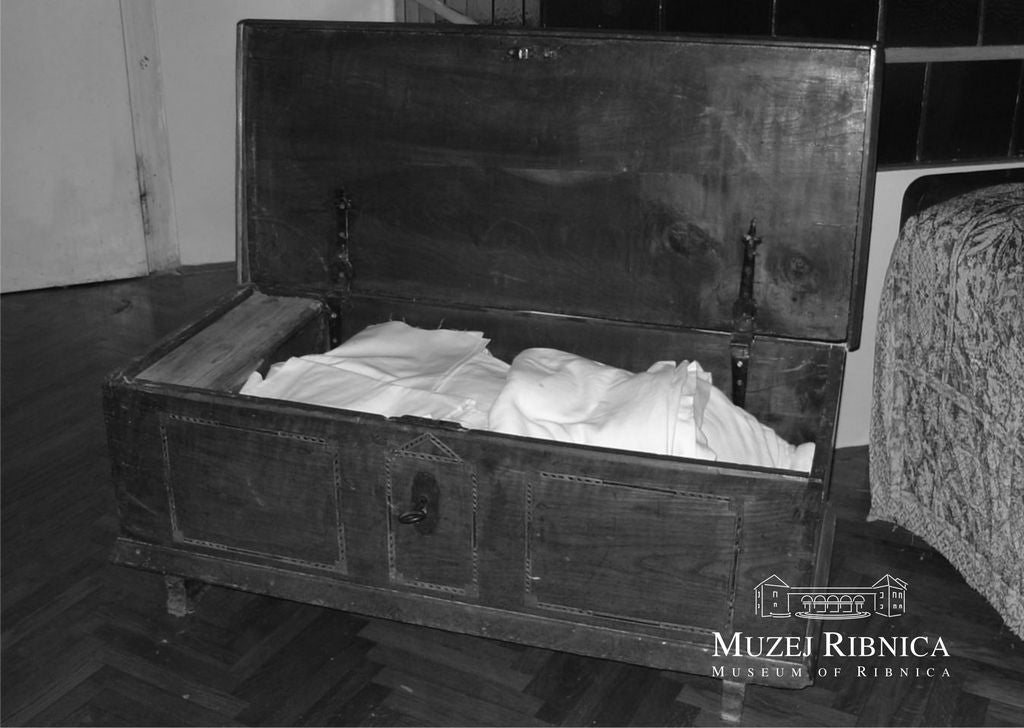SKRINJA
UNTIL THE 20TH CENTURY, WOODEN CHESTS WERE ONE OF THE MOST IMPORTANT PIECES OF HOME FURNITURE IN SLOVENIA. THEY WERE USED BY BOTH FARMERS AND CITIZENS. THEY STORED CLOTHES, TOOLS, GRAIN AND OTHER FIELD PRODUCE IN THEM, THEY SIT ON THEM AND EVEN USED THEM TO SLEEP - INSTEAD OF A BED. SOME HAD COMPARTMENTED WALLS AND DRAWERS ON THE INTERIOR, SOMETIMES ALSO A HIDDEN DRAWER FOR STORAGE OF PRECIOUS OBJECTS.

Until the 20th century, wooden chests were one of the most important pieces of home furniture in Slovenia. They were used by both farmers and townspeople. They stored clothes, tools, grain and other field products in them, sat on them and even used them for sleeping - instead of a bed. Smaller or more valuable objects were kept in smaller chests, e.g. sewing accessories, documents, letters and jewellery. They were made of wood, only the hinges and the lock were metal. Depending on their purpose and the wealth of the owner, the chests could be made of soft spruce wood and without a more demanding surface treatment, or of harder wood such as cherry, walnut, oak and with a more demanding surface treatment. They were of different dimensions. Some had partition walls and drawers inside, sometimes also a hidden drawer for storing valuable items. They were usually made by local peasant craftsmen, who decorated them in accordance with the living culture and traditions of the environment in which they were created.

Depending on the use, two types of chests can be distinguished. Wedding dresses, in which the bride brought the ball to her new home, were usually painted, carved or inlaid. We have no pictorial material on the decoration of wedding chests in the wider Kočevska area, but chests were also an important part of the bride's ball and reflected her social status in Kočevska. As Walter Tschinkel wrote, it was an honor for the bride "if she could bring a chest full of dresses, a spinning wheel, a sickle, a water box and a hoe". Such a bride was considered rich.
The chests for harvesting field products differ from the Zenitovan chests in terms of their construction and the fact that they were not artistically decorated. They usually stood in the granary, and if the house was smaller, in the hall or in the attic. The oldest grain chests were roughly hewn and had a lid in the form of a gable roof, the younger ones have a flat lid.
In the wider area of Kočevska, mainly simple, unadorned chests (Kočevski: "Schrain") have been preserved. However, dr. Adolf Haufen, who researched these places at the end of the 19th century, reports that the chests for clothes in the farmhouses of that time stood in the attic and were decorated with simple paintings or carved patterns.
At the end of the 19th century, chests of goods began to replace wardrobes, sideboards, drawers and other pieces of more or less identical furniture throughout Europe. But the grain chests were kept for a long time. Today, chests are mainly used as decoration, symbolizing a connection with the past and tradition.
